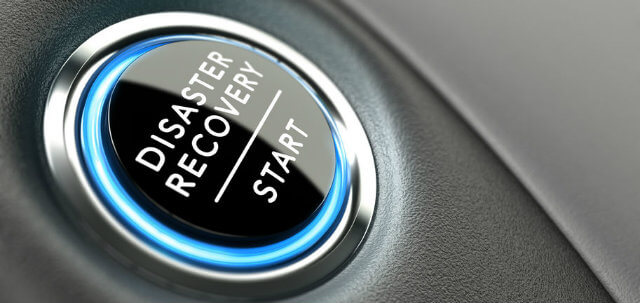

Share on social..
Many companies think a Disaster Recovery Plan (DRP) is basically having all their data backed-up, ready to restore if necessary. This kind of data protection is useful in cases when individual files are accidentally deleted or over-written (which happens a lot), or sometimes when a rogue employee deletes files and folders in order to make mischief. However, having a back-up is only part of your DRP, because you need to think about far more than simple recovery of data.
Why back-up can make a disaster even worse
Without intelligently analysing data and simply uploading everything you will be making a rod for your own back. Not only will backups take longer to upload but when it comes to crunch time and you need to restore your data you will likely need to wait far longer before you can get access to your data.
Survival essentials
To demonstrate why this is not a good idea, we encourage companies to prioritise their business’s data metaphorically in terms of what is essential for human survival, i.e. air, water, and food, with the addition of occasional ‘nice-to-haves’ in terms of junk food.
Air is absolutely essential – we cannot survive for more than a minute without it. Similarly, there are some aspects of trading your business cannot live without – for instance, if you run a recruitment company, your business ‘air’ would probably be access to phones; so your DRP’s priority would be getting the phones up and running as soon as possible. The ability to be able to send and receive email will often be treated as ‘air’ as well.
We can survive for a day or two without water, so once we have our air supply, we have a little time to sort out the next thing on the survival list. In terms of business, those ‘water’ aspects will include recent email: but not everything will be needed at the beginning. It will obviously be important for you to gain access to current conversations, but you can afford to wait a bit longer for the archive data – your ‘food’. It will be the same in terms of your accounts – you will need access to your current invoicing system and cashflow data, but the historic accounting can follow later.
Layered data recovery
Although junk food is a nice-to-have aspect of life, it is not essential to survival. ‘Junk food’ in business terms could even be things like the family photographs employees use as their wallpaper which have no business value. If you relied purely on restoring your back-up in one go as your DRP, the ‘junk food’ on the system would slow everything down considerably, preventing you from reaching your ‘air supply’ quickly enough. Which is why you need to prioritise data and work out the order in which it needs to be recovered.
By choreographing a layered approach to the disaster recovery plan of your system, restoring only your ‘air’ supply to begin with, will mean you can quickly get back to running your business whilst your ‘water’ and ‘food’ are recovered more gradually and in order of importance. Part of your DRP is to identify those critical elements now.
If you would like us to help you with your disaster recovery plan, or you need disaster recovery assistance, contact us to find out more.